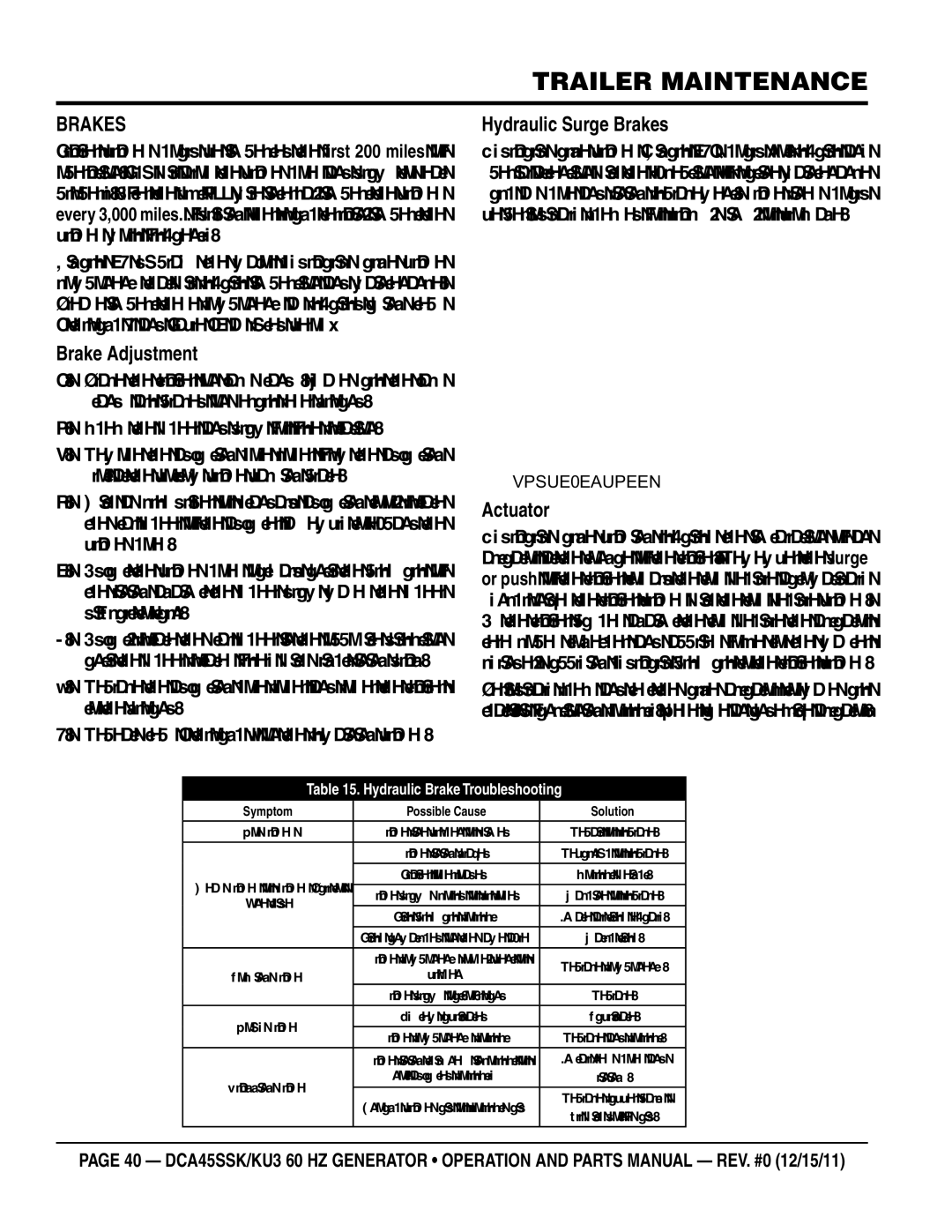DCA45SSKU, DCA45SSKU3 specifications
The Multiquip DCA45SSKU3 and DCA45SSKU are advanced diesel generators designed for a variety of applications, making them an ideal choice for contractors, event planners, and anyone needing reliable power solutions. With a robust design and cutting-edge technologies, these generators stand out in their class for performance and durability.One of the main features of the DCA45SSKU3 and DCA45SSKU is their impressive power output. Offering a prime power capacity of 45 kVA, these generators are equipped with a powerful Yanmar engine that provides reliable and efficient performance. The engine operates at low speed, which not only enhances fuel efficiency but also reduces noise levels, making these generators suitable for use in noise-sensitive environments.
The generators come equipped with a fully integrated control panel, featuring an intuitive digital display that allows users to monitor operating parameters such as voltage, frequency, and runtime. This user-friendly interface simplifies operation, ensuring that even those unfamiliar with generator technology can easily manage the generator's functions.
In terms of fuel capacity, the DCA45SSKU and DCA45SSKU3 are designed for extended run times. The large fuel tank allows for continuous operation, meaning users can depend on these generators for prolonged periods without frequent refueling, enhancing their suitability for long-duration projects and events.
Another remarkable characteristic is the trailer-mounted design, providing excellent portability. This feature enables users to easily transport the generator to different job sites or locations, making it perfect for construction sites, outdoor events, or emergency backup power situations. The rugged construction also ensures that the generator can withstand the wear and tear of being moved frequently.
Safety features are integral to the design of the DCA45SSKU3 and DCA45SSKU. The generators are equipped with automatic shutdown mechanisms in case of low oil pressure or overheating, protecting the unit from damage and ensuring safe operation. Additionally, the sound-attenuated enclosure minimizes noise pollution, a crucial consideration for operations in populated areas.
In summary, the Multiquip DCA45SSKU3 and DCA45SSKU generators are powerful, portable, and feature-rich solutions for anyone in need of reliable diesel power. With their advanced technology, fuel efficiency, and safety features, these generators are an excellent choice for a wide range of applications, ensuring that users can access the power they need, when they need it.

